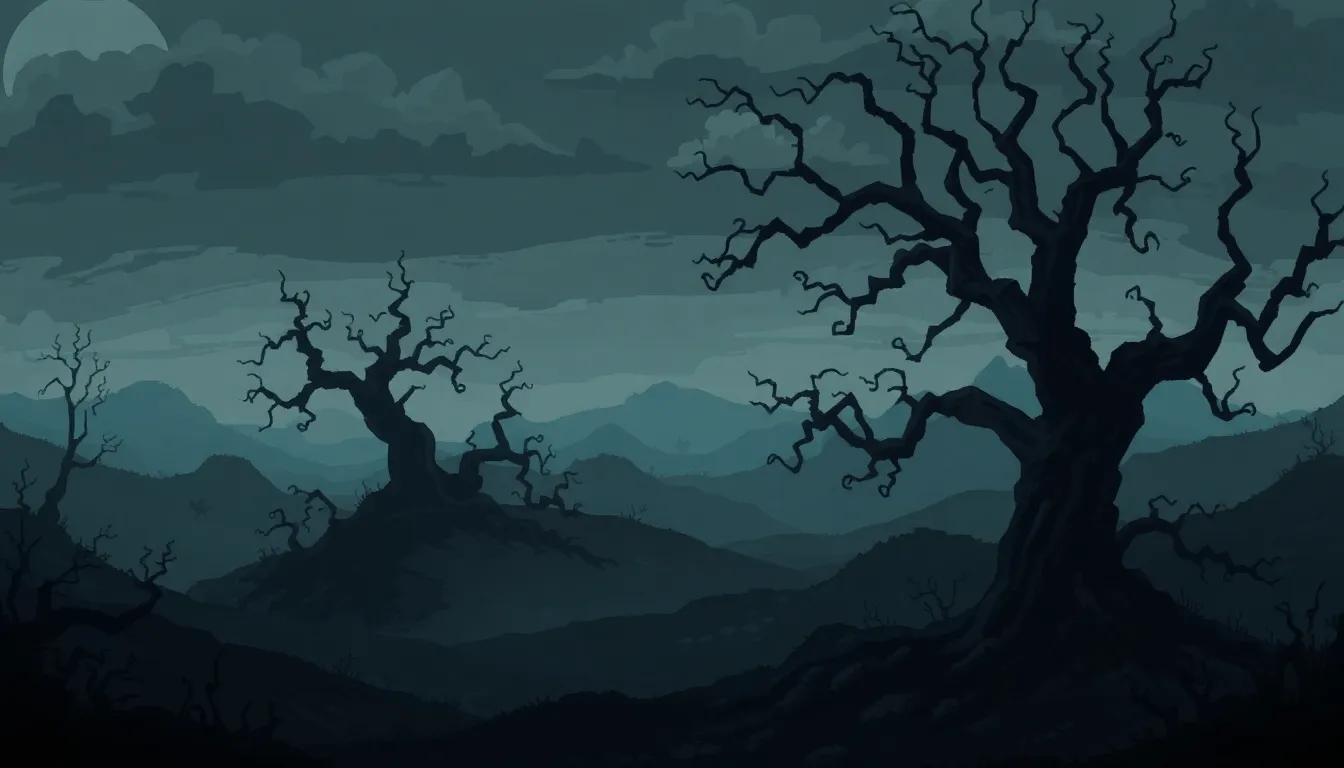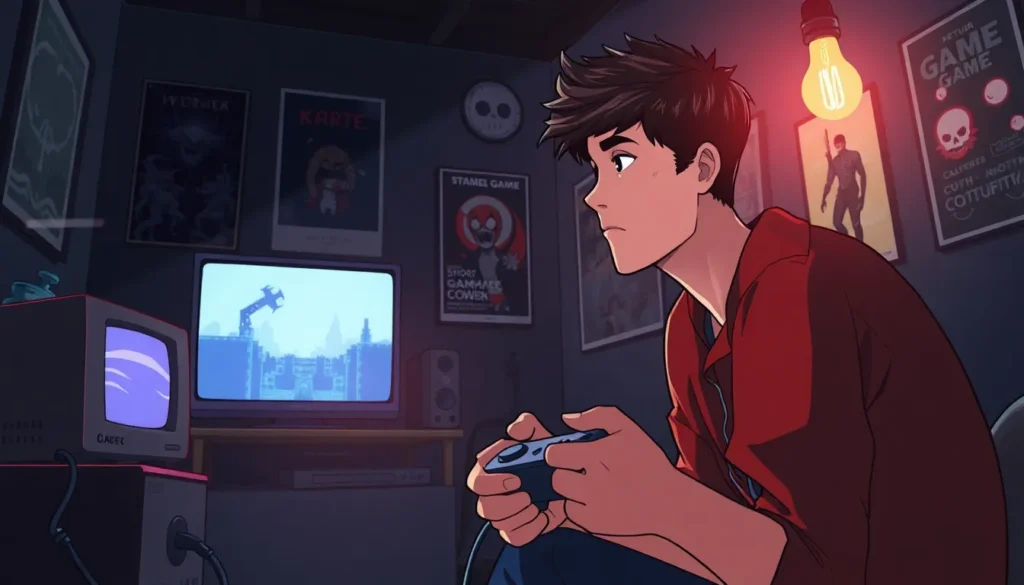Table of Contents
ToggleIn a world where high-definition graphics reign supreme, pixel horror games are like a breath of fresh air—or perhaps a chilling gust of wind that sends shivers down your spine. These retro-styled gems blend nostalgia with spine-tingling thrills, proving that sometimes, less really is more. With their charmingly blocky graphics and eerie soundtracks, they invite players into a realm where every pixel hides a secret and every shadow could be lurking danger.
Imagine navigating through a pixelated nightmare, where the only thing scarier than the monsters is the realization that you forgot to save your progress. These games masterfully craft tension and atmosphere, making players question their sanity while trying to escape pixelated horrors. Whether you’re a seasoned horror aficionado or just looking for a good scare, pixel horror games offer a unique experience that’s both delightful and terrifying—perfect for those who love a good laugh mixed with their fear.
What Are Pixel Horror Games?
Pixel horror games merge retro aesthetics with chilling narratives. These titles captivate players through their unique blend of nostalgia and fear, crafting immersive experiences that draw on classic gaming influences.
Origins of Pixel Horror Games
Pixel horror games trace their roots to early indie game development in the 2000s. Developers embraced limited technology, creating low-resolution graphics imbued with third-generation console vibes. As a result, these games inspired a wave of creativity, emphasizing storytelling and atmosphere over graphical fidelity. Cult classics such as Yume Nikki and Lone Survivor paved the way for future titles, establishing a recognizable genre that focuses on psychological fear. These games appeal to a dedicated audience drawn to their retro charm and innovative storytelling.
Characteristics and Aesthetics
Pixel horror games feature distinctive visual styles characterized by 8-bit or 16-bit graphics. These graphics evoke a sense of nostalgia while complementing unsettling themes. Limited color palettes contribute to the eerie atmosphere, often utilizing stark contrasts to highlight moments of tension. Sound design plays a pivotal role; minimalist soundtracks and ambient noises enhance the overall experience. Encounters in pixel horror games often involve unexpected scares, psychological tension, and surreal environments. This combination immerses players in a pixelated nightmare where every detail elicits a sense of dread.
Popular Pixel Horror Games

Numerous pixel horror games capture the imagination of players through their unique blend of aesthetics and storytelling. These titles highlight the genre’s signature charm, invoking suspense and intrigue.
Notable Titles to Explore
Yume Nikki stands out as an iconic entry. This game immerses players in a surreal dream world filled with bizarre characters and unsettling scenarios. Lone Survivor offers a gripping psychological experience, featuring a haunting narrative and survival elements. Mad Father combines adventure and horror with its compelling story and visual style. Omori incorporates RPG mechanics while exploring themes of mental health amidst pixelated terror. Each of these games encapsulates the essence of pixel horror, inviting exploration of their chilling realms.
Unique Gameplay Elements
Pixel horror games often employ innovative gameplay mechanics that enhance immersion. Players navigate surreal environments where exploration becomes essential. Puzzles require critical thinking, deepening the sense of unease. Resource management plays a key role, as players must decide when to use limited items. Narrative choices frequently affect outcomes, adding layers to storytelling. Surprise encounters with terrifying foes keep players on edge, ensuring constant tension. Overall, unique gameplay elements contribute to a captivating and fear-inducing experience.
The Appeal of Pixel Horror Games
Pixel horror games capture the imagination through their unique blend of graphics and sound design. They evoke nostalgia while immersing players in a chilling atmosphere, making each experience memorable and engaging.
Nostalgia Factor
Nostalgia plays a crucial role in the allure of pixel horror games. Retro graphics transport players back to the early days of gaming, where simplicity thrived. Familiarity with 8-bit and 16-bit styles draws in both long-time gamers and newcomers. Classic visuals invoke a sense of comfort that contrasts sharply with unsettling narratives. This powerful combination of nostalgia and fear heightens emotional responses, leading to a captivating experience. Players often find joy in revisiting these pixelated worlds, even as their guards remain up against the looming scares.
Creative Storytelling Techniques
Creative storytelling distinguishes pixel horror games within the genre. Emphasis on narrative depth generates engagement and intrigue. Each title often integrates exploration and character interactions, leading to compelling storylines that unfold uniquely. Players encounter branching narratives that empower them to shape their journeys. This mechanic fosters a feeling of agency while amplifying tension throughout gameplay. Surreal environments and symbolic imagery reinforce themes of dread and discovery. This blend of interactive storytelling and visual artistry enhances immersion, allowing players to experience horror on multiple emotional levels.
Future of Pixel Horror Games
The future of pixel horror games promises exciting developments and evolving trends. Developers continue to explore creative avenues, ensuring that this genre remains fresh and captivating.
Emerging Trends
Indie developers increasingly experiment with hybrid gameplay styles. These games blend pixel graphics with different genres, enhancing narrative depth and expanding player engagement. Additionally, trends like community-driven content and user-generated levels gain traction. Players actively participate in the creative process, fostering a vibrant gaming community. Virtual reality could also make an appearance, immersing players in haunted pixelated worlds.
Potential Innovations
Innovations in artificial intelligence enhance character interactions, boosting realism in pixel horror narratives. Enhanced sound design keeps players on edge, adding layers of audio dread to the gameplay experience. Moreover, advancements in procedural generation create unpredictable environments, ensuring each playthrough feels unique. Diverse storytelling techniques, including branching narratives and emotional choices, shape player experiences in innovative ways. These elements combine to elevate pixel horror games, making them increasingly engaging for players.
Pixel horror games stand out as an intriguing genre that combines nostalgia with spine-chilling experiences. Their unique aesthetics and immersive storytelling create an atmosphere that captivates players and evokes genuine fear. As indie developers continue to innovate and push boundaries, the future of pixel horror games looks promising.
With advancements in gameplay mechanics and community-driven content, players can expect even deeper narratives and more engaging interactions. This evolution will likely attract a new generation of gamers while keeping long-time fans hooked. The blend of retro charm and modern creativity ensures that pixel horror games remain a vital part of the gaming landscape, promising thrills for years to come.




